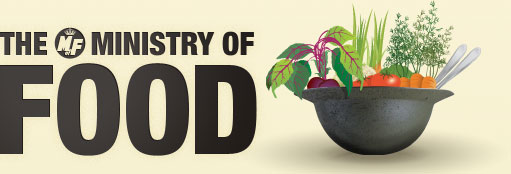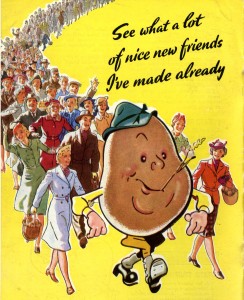Growing your own – so what’s new?

March 1, 2010
The days of food rationing may be long over but the need to alter our eating habits is as important as ever. This became clear on my recent visit to – of all places – the Imperial War Museum in London.
Its Ministry of Food exhibition reveals some fascinating parallels between the dig for victory campaign in the Second World War and the enthusiasm that we all now share for growing our own food.
It shows that eating seasonal fruit and vegetables, healthy nutrition, recycling and reducing imports were just as important in 1940 as they are today.
But for very different reasons 70 years ago, of course.
Back then as now, people queued up for allotments and pledged to grow fruit and vegetables at work and in their gardens. They learned all about crop rotation, the value of nutritious green manure and how to create rich, sweet-smelling compost. They clubbed together to raise pigs, poultry and rabbits.

By 1943, more than six million British families were growing their own veg. The number of allotments had doubled to 1.75 million compared to 850,000 in 1939. Potatoes – led by cheery icon Potato Pete – replaced imported wheat as a staple of the wartime diet because they were full of vitamin C, easy to grow, cheap, filling and energy-rich.
A vegetable list to provide “winter meals from a well-planned plot” itemised potatoes, cabbage, sprouting broccoli, carrots, onions, shallots, beetroot, swede, brussels sprouts, parsnips, leeks, kale, savoy cabbage, spinach beet and turnip.
Unsurprisingly, it mirrors the contents of Camel Community Supported Agriculture’s own seasonal weekly veg boxes being handed out to our members during the winter months.
The only difference is, thanks largely to multicultural influences, that our seasonal recipes are much more tasty and adventurous!
The Ministry of Food exhibition runs at the Imperial War Museum in London until 3 January 2011. It’s sponsored by Company of Cooks.


